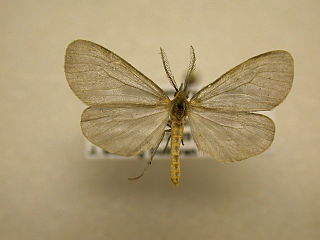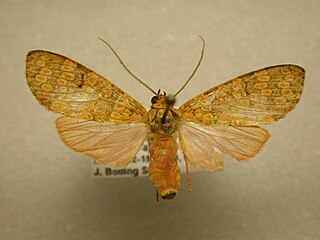
The kola nut is the fruit of the kola tree, a genus (Cola) of trees that are native to the tropical rainforests of Africa. The caffeine-containing fruit of the tree is used as a flavoring ingredient in beverages, and is the origin of the term cola.

William Walker was an American physician, lawyer, journalist, and mercenary who organized several private military expeditions into Mexico and Central America with the intention of establishing English-speaking colonies under his personal control, an enterprise then known as "filibustering". Walker usurped the presidency of Nicaragua in July 1856 and ruled until May 1, 1857, when he was forced out of the presidency and the country by a coalition of Central American armies. He returned in an attempt to re-establish his control of the region and was captured and executed by the government of Honduras in 1860.
Banksia acuminata is a rare prostrate shrub endemic to south-west Western Australia. It was published in 1848 as Dryandra preissii, but transferred into Banksia as B. acuminata in 2007.
Baritius is a genus of moths in the family Erebidae. The genus was erected by Francis Walker in 1855.

Homoeocera is a genus of moths in the subfamily Arctiinae The genus was erected by Cajetan Felder in 1874.

Pagara is a monotypic moth genus in the family Erebidae. Its only species, Pagara simplex, the mouse-colored lichen moth, is found in North America, where it has been recorded from Alabama, Arkansas, Florida, Georgia, Illinois, Indiana, Iowa, Kansas, Kentucky, Maryland, Mississippi, New Hampshire, North Carolina, Ohio, Oklahoma, South Carolina and Tennessee. Both the genus and species were described by Francis Walker in 1856.
Baritius affinis is a moth of the family Erebidae first described by Walter Rothschild in 1910. It is found in Brazil, French Guiana and Amazonas.
Baritius brunnea is a moth of the family Erebidae first described by George Hampson in 1901. It is found in the Amazon region.
Baritius discalis is a moth of the family Erebidae first described by Francis Walker in 1855. It is found in Brazil.
Baritius eleuthera is a moth of the family Erebidae first described by Caspar Stoll in 1781. It is found in Suriname, Ecuador, Peru, Bolivia, Panama and the Brazilian state of Amazonas.
Baritius eleutheroides is a moth of the family Erebidae first described by Walter Rothschild in 1909. It is found in Brazil, Peru, Suriname, French Guiana, Venezuela, Ecuador and Costa Rica.
Baritius flavescens is a moth of the family Erebidae first described by Walter Rothschild in 1909. It is found in Brazil.
Baritius nigridorsipeltatus is a moth of the family Erebidae first described by Embrik Strand in 1921. It is found in Argentina.
Baritius cyclozonata is a moth of the family Erebidae. It was described by George Hampson in 1901. It is found in French Guiana, Suriname, Brazil, the Amazon region, Ecuador, Peru and Bolivia.
Baritius sannionis is a moth of the family Erebidae. It was described by Walter Rothschild in 1909. It is found in French Guiana, Brazil, Ecuador, Peru, Bolivia and Costa Rica.

Glaucostola guttipalpis is a moth of the family Erebidae first described by Francis Walker in 1856. It is found in French Guiana, Guyana, Brazil, Ecuador and Costa Rica.

Baritius grandis is a moth of the family Erebidae. It was described by Walter Rothschild in 1909. It is found in Costa Rica, Peru and Ecuador.
Homoeocera acuminata is a moth of the subfamily Arctiinae first described by Francis Walker in 1856. It is found in Paraná, Brazil.
Hakea acuminata is a shrub of the family Proteaceae native to Western Australia. A restricted species bearing clusters of white flowers with a green or pinkish tinge in late autumn to winter.

Cyphomyia is a genus of flies in the subfamily Clitellariinae.






